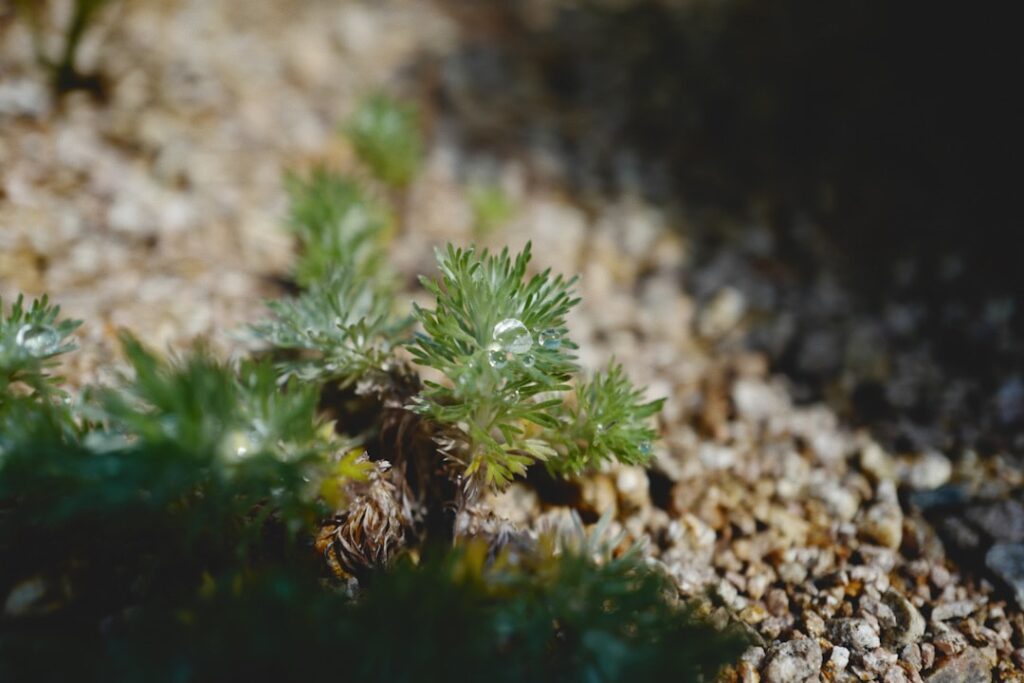A solid paver base is the foundation of any successful paver project. It provides stability and support for the pavers, ensuring that they remain level and do not shift over time. Without a proper base, pavers can sink, shift, or become uneven, leading to an unsightly and potentially hazardous surface. Additionally, a solid base helps to prevent weed growth and erosion, prolonging the life and beauty of your outdoor space.
Furthermore, a well-constructed paver base allows for proper drainage, preventing water from pooling and causing damage to the pavers. This is especially important in areas with heavy rainfall or snowfall, as standing water can lead to erosion and deterioration of the pavers. In essence, a solid paver base is essential for creating a durable and long-lasting outdoor surface that will stand the test of time.
Key Takeaways
- A solid paver base is crucial for the longevity and durability of your outdoor paver surface.
- Choosing the right materials, such as gravel and sand, is essential for creating a stable and supportive paver base.
- Proper installation techniques, including proper excavation and compaction, are key to ensuring a durable paver base.
- Tips for compacting and leveling your paver base include using a plate compactor and ensuring proper slope for drainage.
- Adding drainage to your paver base is important for preventing water damage and increasing the longevity of your outdoor paver surface.
- Regular maintenance, such as weeding and re-leveling, is necessary for keeping your paver base in good condition.
- Common mistakes to avoid when creating a paver base include inadequate compaction, improper slope, and using low-quality materials.
Choosing the Right Materials for Your Paver Base
When it comes to choosing materials for your paver base, there are several options to consider. The most common materials used for paver bases include crushed stone, gravel, and sand. Each material has its own advantages and considerations, so it’s important to choose the right one for your specific project.
Crushed stone is a popular choice for paver bases due to its stability and durability. It provides excellent support for the pavers and allows for proper drainage. Gravel is another option that offers good drainage and stability, but it may require more frequent maintenance to prevent weed growth. Sand is often used as a leveling agent on top of the base material, providing a smooth surface for the pavers to be laid on.
In addition to the base material, it’s important to consider using a geotextile fabric to help prevent weed growth and stabilize the base. This fabric can be placed between the base material and the soil to provide an extra layer of protection and support for the pavers. Ultimately, choosing the right materials for your paver base is crucial for creating a strong and durable foundation for your outdoor space.
Proper Installation Techniques for a Durable Paver Base
Proper installation techniques are essential for creating a durable paver base that will stand the test of time. The first step in the installation process is to excavate the area to the proper depth, taking into account the thickness of the pavers, base material, and any additional layers such as geotextile fabric. It’s important to ensure that the base is level and compacted to provide a stable foundation for the pavers.
Once the area has been excavated, the base material should be spread evenly and compacted using a plate compactor or hand tamper. This will help to create a solid and stable surface for the pavers to be laid on. After the base material has been compacted, a layer of sand should be spread on top to provide a smooth and level surface for the pavers.
When laying the pavers, it’s important to use proper spacing and alignment techniques to ensure a uniform and professional-looking finish. Additionally, edge restraints should be installed to prevent the pavers from shifting or spreading over time. By following proper installation techniques, you can create a durable and long-lasting paver base that will enhance the beauty and functionality of your outdoor space.
Tips for Compacting and Leveling Your Paver Base
| Tip | Description |
|---|---|
| 1 | Use a plate compactor |
| 2 | Compact in layers |
| 3 | Check for level frequently |
| 4 | Use a straight edge for leveling |
| 5 | Moisten the base if necessary |
Compacting and leveling your paver base is crucial for creating a stable foundation for your outdoor surface. Proper compaction helps to prevent settling and shifting of the base material, ensuring that the pavers remain level and secure over time. There are several tips to keep in mind when compacting and leveling your paver base to achieve the best results.
First, it’s important to use the right equipment for compacting the base material. A plate compactor is typically used for larger areas, while a hand tamper can be used for smaller or hard-to-reach areas. It’s important to make multiple passes with the compactor or tamper to ensure that the base material is thoroughly compacted and stable.
In addition to compaction, leveling the base material is essential for creating a smooth and even surface for the pavers. A screed board or straight edge can be used to level the base material before adding the layer of sand. This will help to ensure that the pavers are laid on a flat and uniform surface, preventing any unevenness or gaps between the pavers.
Finally, it’s important to periodically check the level and compaction of the base material as you work to ensure that it remains stable and even throughout the installation process. By following these tips for compacting and leveling your paver base, you can create a strong and durable foundation for your outdoor surface.
Adding Drainage to Your Paver Base for Longevity
Proper drainage is essential for maintaining the longevity of your paver base and preventing damage from water accumulation. Without adequate drainage, water can pool on the surface of the pavers, leading to erosion, mold growth, and deterioration of the base material. There are several methods for adding drainage to your paver base to ensure that it remains stable and durable over time.
One effective way to improve drainage is by incorporating a slight slope into the base during installation. This will allow water to naturally flow away from the surface of the pavers, preventing pooling and potential damage. Additionally, installing a perforated pipe or French drain system beneath the base material can help to redirect water away from the area, further enhancing drainage and stability.
Another option for improving drainage is to use permeable pavers, which are designed with larger gaps between each unit to allow water to seep through into the underlying soil. This can help to prevent water from pooling on the surface of the pavers and reduce the risk of erosion or damage over time. By adding proper drainage to your paver base, you can ensure that it remains stable and durable for years to come.
Maintaining Your Paver Base for Lasting Outdoor Surfaces

Proper maintenance is essential for ensuring that your paver base remains durable and long-lasting over time. Regular maintenance helps to prevent weed growth, erosion, and shifting of the pavers, preserving the beauty and functionality of your outdoor surface. There are several key maintenance tasks to keep in mind when caring for your paver base.
One important aspect of maintenance is keeping the surface clean and free of debris. Regularly sweeping or blowing off leaves, dirt, and other debris helps to prevent buildup that can lead to weed growth or deterioration of the pavers. Additionally, removing any weeds that do appear in between the pavers helps to maintain a clean and uniform appearance.
Another important maintenance task is inspecting the base material for any signs of settling or erosion. If you notice any areas where the base material has shifted or become uneven, it’s important to address these issues promptly to prevent further damage to the pavers. Adding additional base material or re-compacting as needed can help to restore stability and prevent future problems.
In addition to regular cleaning and inspections, it’s important to address any drainage issues that may arise over time. Clearing any clogs in drainage systems or regrading areas with poor drainage can help to prevent water damage and preserve the integrity of the paver base. By staying proactive with maintenance tasks, you can ensure that your paver base remains durable and long-lasting for years to come.
Common Mistakes to Avoid When Creating a Paver Base
While creating a paver base may seem straightforward, there are several common mistakes that should be avoided to ensure a successful outcome. One common mistake is failing to properly compact the base material before laying the pavers. Inadequate compaction can lead to settling and shifting of the base over time, causing damage to the pavers and compromising their stability.
Another common mistake is using improper materials for the base, such as organic materials like topsoil or mulch. These materials are not suitable for creating a stable foundation for pavers and can lead to settling, erosion, and weed growth over time. It’s important to use materials specifically designed for creating a durable and long-lasting paver base.
Improper drainage is another common mistake that can lead to problems with a paver base over time. Failing to incorporate proper drainage techniques can result in water pooling on the surface of the pavers, leading to erosion and deterioration of the base material. It’s important to address drainage issues during installation to prevent potential damage in the future.
Finally, neglecting regular maintenance is a common mistake that can lead to problems with a paver base over time. Without proper care and attention, issues such as weed growth, settling, and drainage problems can arise, compromising the stability and longevity of the pavers. By avoiding these common mistakes and following proper installation and maintenance techniques, you can create a durable and long-lasting paver base for your outdoor space.
Finally, neglecting regular maintenance is a common mistake that can lead to problems with a paver base over time. Without proper care and attention, issues such as weed growth, settling, and drainage problems can arise, compromising the stability and longevity of the pavers. By avoiding these common mistakes and following proper installation and maintenance techniques, you can create a durable and long-lasting paver base for your outdoor space. Regular maintenance tasks such as sweeping, weeding, and re-leveling the pavers can help prevent these issues from occurring and ensure that your paver base remains in good condition for years to come. Additionally, addressing any drainage issues promptly and using proper jointing sand can help maintain the stability of the paver base and prevent problems from developing. Overall, investing time and effort into regular maintenance will pay off in the form of a beautiful and functional outdoor space that will last for many years.
Looking for more information on paver base materials? Check out this informative article on the GenTeStore website that delves into the different types of paver base options and their benefits. Whether you’re considering gravel, sand, or crushed stone, this article provides valuable insights to help you make an informed decision for your next landscaping project. GenTeStore offers a wealth of resources to guide you through the process of selecting the best paver base for your specific needs.
FAQs
What is paver base?
Paver base is a material used as a foundation for laying pavers. It provides a stable and level base for the pavers to be installed on.
What is paver base made of?
Paver base is typically made of crushed stone, gravel, or sand. It is designed to be compacted to create a solid base for the pavers.
Why is paver base important?
Paver base is important because it helps to prevent the pavers from shifting or sinking over time. It also helps to distribute the weight of the pavers evenly, reducing the risk of cracking or damage.
How thick should paver base be?
The thickness of the paver base will depend on the specific project and the type of pavers being used. In general, a paver base should be at least 4-6 inches thick.
Do I need to compact the paver base?
Yes, it is important to compact the paver base to ensure that it is stable and provides a solid foundation for the pavers. This can be done using a compactor or tamper.
Can I use paver base for other projects?
Paver base is specifically designed for use with pavers, but it can also be used as a base for other types of outdoor projects, such as retaining walls or walkways.





